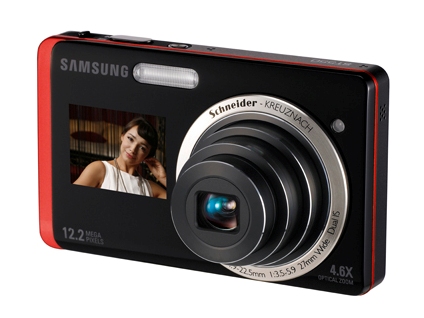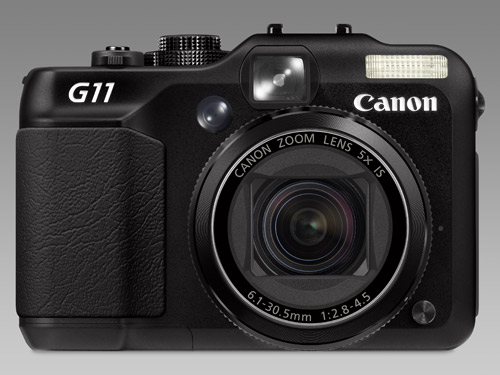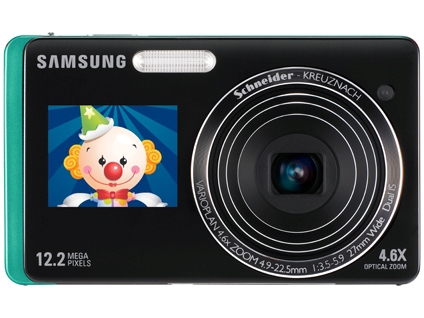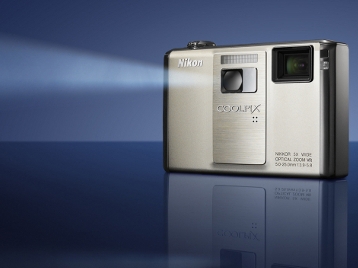After megapixels: 10 new camera battlegrounds
Touchscreens, GPS, Wi-Fi, better image processing and more

The digital camera market has moved beyond the number of megapixels on offer. Manufacturers seem to be finally accepting the race is coming to an end.
We've been hearing that this might occur for some time, but now it's actually upon us.
Mind you, that's not to say the digital camera market is performing poorly - Global Industry Analysts predict that 122 million units will be shipped next year with SLR models still in growth as users outgrow their current compacts.
"For a long time, megapixels seemed to be an easy way to market the latest cameras, and to a certain amount that's probably still true," explains Amy Davies, Staff Writer on PhotoRadar.com. "20 megapixels just sounds better than 10, no matter what the camera's other features are."
Last month, Canon launched a successor to its flagship PowerShot G10 compact camera - with several megapixels less resolution. The PowerShot G11 uses a 'high sensitivity' 1/1.7-inch 10MP CCD sensor, compared to the 14.7MP chip at the heart of the outgoing G10. Aside from Canon, other major manufacturers have refreshed ranges without upping megapixel counts.

"On the average compact megapixels start to become irrelevant once you reach a certain point, which I think consumers have begun to notice and this is why we're now seeing cameras with 'extras' such as GPS locators, front LCD screens, projectors and so on," says Davies. And that's not all – cameras can even store your images in folders depending on type, recognise different facial aspects and even show strangers how you want them to take a picture of you.
So with the pixel race now dying down, manufacturers want to turn our heads elsewhere. Let's run down a top 10 of gimmicks you should look for on your next compact.
Sign up for breaking news, reviews, opinion, top tech deals, and more.
1. 3D cameras
It might have so far been seen as a gimmick, but 3D is now serious business for TV manufacturers and broadcasters like Sky. And its future prevalence hasn't escaped camera manufacturers, either. The Fujifilm FinePix Real 3D W1 features two Fujinon lenses - each with its own 10MP CCD sensor - that are securely mounted side by side. When using the camera in 3D mode each of these sensors records its own image, which are then fed into the camera's 'Real Photo Processor 3D' image processor. There they're aligned, combined and turned into a 3D image that can be viewed on the rear LCD screen without the need for fancy 3D glasses.
2. Extra screens
A screen on the front of a digital camera? Sounds rubbish? Yep, that's what we thought. The 12.2-megapixel ST550 and ST500 compact cameras have a second 1.5-inch LCD on the front of the camera that only lights up when you touch it. But there is some common sense there – couples taking shots of themselves will no longer have a problem, while cartoon characters on the screen are designed to help children look towards the camera rather than elsewhere.

3. Gesture recognition
The same £299 ST550 Samsung compact includes a technology called Smart Gesture User Interface. This means that you can tap the camera or make a hand gesture to get it to perform certain tasks. While we shouldn't expect it to become standard on all compacts any time soon, it's still an interesting development.
4. In-camera projectors
Nikon has already announced a compact with a built-in projector. The £399 Nikon S1000pj is out this month, but it's clearly the shape of things to come - Nikon says the camera can project images up to 40 inches in size (and as low as 5 inches) and there's also a remote control in the package, so you can set up your own image slideshow on the go. We'll be seeing a lot more of these.

- 1
- 2
Current page: 10 weapons in the new digital camera wars
Next Page Geotagging, touchscreens, and moreDan (Twitter, Google+) is TechRadar's Former Deputy Editor and is now in charge at our sister site T3.com. Covering all things computing, internet and mobile he's a seasoned regular at major tech shows such as CES, IFA and Mobile World Congress. Dan has also been a tech expert for many outlets including BBC Radio 4, 5Live and the World Service, The Sun and ITV News.